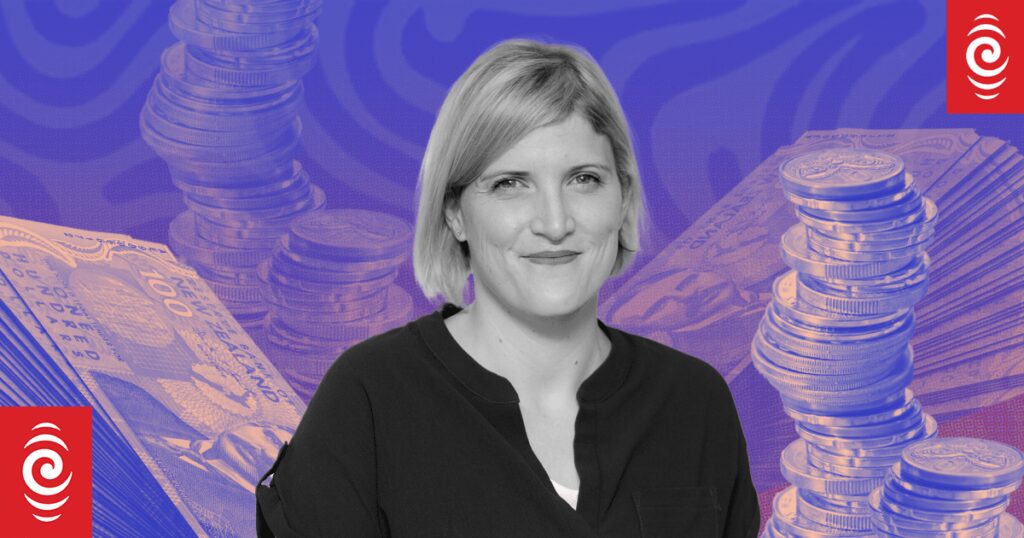Photo: RNZ
Got a question about personal finance or the economy? Send it to susan.edmunds@rnz.co.nz
Would it be safe for the Government to issue 2 percent, 30-year loans to first home buyers? (Creating the money, and assuming a 5.5 percent OCR for other groups and other controls.)
I’ve looked in the past at why New Zealand banks don’t offer the same sort of 30-year fixes that are common in the United States. It’s basically that New Zealand’s economy is too small for the banks to be able to manage the interest rate risk.
But I haven’t previously contemplated the government offering home loans.
Squirrel chief executive David Cunningham agreed that the prospect of 2 percent loans would be pretty appealing to first-home buyers. But he said the significant saving for them – about $27,700 per borrower per year based on current settings – would come at a large cost to taxpayers.
“Assuming a long-term borrowing rate of 4 percent for the government, it’d cost about $0.3 billion a year [on current levels of borrowing]. But that multiplies year after year. By the end of five years, it would cost the government about $1.5b per annum of additional borrowing costs. And in those five years it would have cost the government $4.5b. That would dramatically increase each year due to the continued growth in debt and the power of compounding interest. Over time, the interest cost would likely swamp the budgets for education, health, law and order, superannuation, and transport.”
The other problem with this idea is that it would push up house prices. This is what happened post-lockdown when interest rates plummeted and property prices rose almost 50 percent.
“With cheap money just for first-home buyers, prices might not increase as much, but [increases] would almost certainly be more than 20 percent as first-home buyers tried to outbid each other to secure a property. Obviously, higher prices make it much harder to save a deposit,” Cunningham said.
“Another observation is that first-home buyers would squeeze property investors out of the market. This would almost certainly lead to a rental crisis and rapidly rising rents.”
You would also have to ask how equipped the government is to get into the business of home loans.
Cunningham points out that banks have developed their credit risk management skills over hundreds of years. “When things go wrong with poor quality lending, it can cost an economy such as New Zealand’s many billions or tens of billions of dollars.”
Gareth Kiernan, at Infometrics, said our housing problems would not be solved by offering low-interest rates carte blanche.
“Primarily, policy needs to be focused on identifying and then rectifying the problems that have led to the housing affordability crisis.”
There could be a place for transitional policies to help until the market was in a better position, Kiernan said.
“These policies might involve low-interest loans, or providing more social housing, until the housing supply has improved and housing costs are not so high.”
He said a more sensible option might be to offer loans at the same rate as the government can borrow at.
“But even then I would argue it should only be a transitional scheme until housing affordability has improved, or a highly targeted scheme for people who need additional assistance purchasing their first home.”
Why is everyone waiting for interest rates to go down, and regarding the Reserve Bank’s current rate as being hawkish, when it is only 5.5%? In years gone by, when interest rates were down within a very few percentage points of zero, I had thought that was just because of the aftermath of the GFC, and then Covid after that. Are we never going to get back to “normal”, when either side of 5% could be seen as neutral-ish?
It is true that interest rates have been higher in the past. In 2008, the floating rate got to more than 10 percent. In the 1980s, rates were much higher.
But current rates are still higher than the average of recent decades. Kiernan said anyone who had bought their first house since 2009 would not have seen interest rates as high as they have been last year and this year.
The OCR, too, is high – in its most recent monetary policy statement, the Reserve Bank’s monetary policy committee noted the long-run nominal neutral OCR was estimated to be 2.75 percent, so we are well above that. (The neutral rate is where the Reserve Bank thinks the OCR isn’t affecting the economy either way.)
Part of the reason rates are hurting so much this time around is probably the size of the debt that many people are carrying – and the fact that rates lifted at such a swift pace.
The last time interest rates were this high, the median house price was about half what it is now.
I do think people should not be hanging out for a return to the sort of interest rates we saw during the lockdown period. It would take a major economic shock to get us back there, and that’s not something to wish for. But I do think it’s reasonable to expect that interest rates will settle lower than they are now once the Reserve Bank is satisfied it has inflation under control.
Note: advice is generic in nature. Specific guidance should be sought from professional advisers
>>> Read full article>>>
Copyright for syndicated content belongs to the linked Source : RNZ – https://www.rnz.co.nz/news/on-the-inside/521440/ask-susan-can-t-the-govt-give-2-percent-home-loans

